As healthcare systems brace for the present and future challenges, the reality lies in reassessment. Reviewing the system involves a check on system efficiency, operational capacities, and billing accuracy. Patient needs require accurate and efficient billing processes, which can be achieved through billing automation. Automation in healthcare is only complete when it is efficiently implemented in medical billing processes. This aspect of healthcare automation really begins after the patient leaves the clinic or hospital. Healthcare reimbursement from insurance companies is solely dependent on the efficiency of billing automation. Overall, healthcare revenue cycle solutions are the lifeblood of automation in healthcare.
What is the Medical Billing Process?
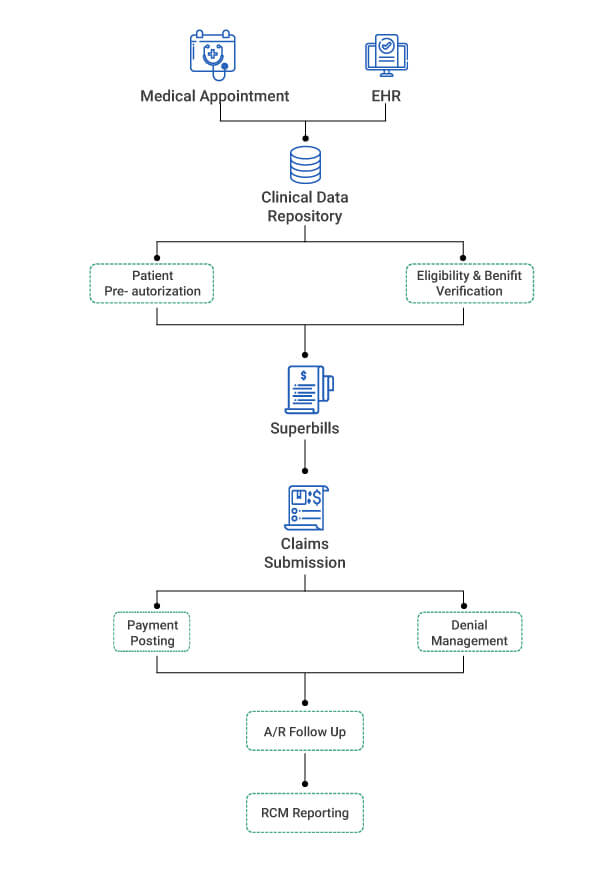
Medical billing processes are not performed or dependent on a single entity. It involves wholesome participation across the entire healthcare organization. Specifically, billing automation in healthcare must involve the billing department and the administrative department, and the clinicians themselves. The complexity of the medical billing process and procedures arises from the fact that the payment is usually not made upfront. Much unlike the usual process of immediate payment for a service, the U.S. healthcare system requires to follow up accuracy with medical billing codes. Automation of healthcare in medical billing requires consistent association with healthcare insurance companies as a key component.
Medical billing processes involve every step of association between the patient and the healthcare organization. Beginning from the pre-registration process, wherein the patient schedules an appointment, up until the point of completion of visit or consultation, the online medical billing solution is a comprehensive assessment. The medical billing process and procedures then involve assessing the patient’s insurance plan, co-pay options, insurance eligibility, and coverage options. After the patient’s visit, medical billing codes are accurately applied, which translate into payment reflections. Reimbursement is then received based on the accuracy of medical billing codes. Healthcare automation requires HIPAA compliance with medical billing online. Upon approval of the claim, healthcare reimbursement is received. This process can be significantly simplified through automated healthcare solutions.
What Is The Current Healthcare Billing Scenario?
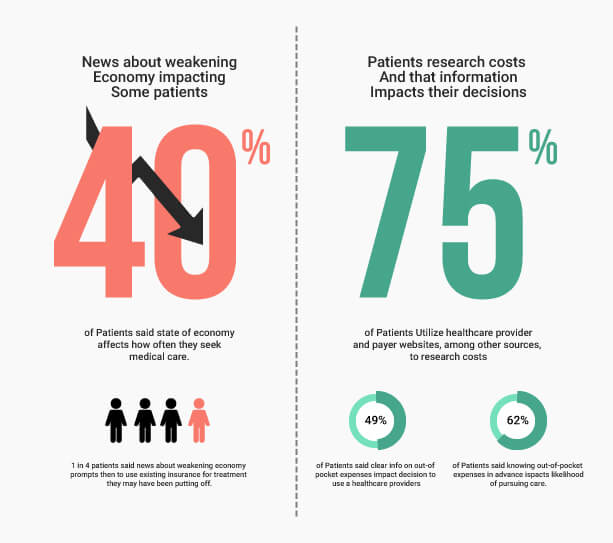
As infections across the nation grow with the Covid-19 outbreak, patients’ health and safety lie as the top priority in medical care. The covid-19 pandemic has also caused a massive outbreak of unemployment and financial insecurities, which directly impacted the medical billing process. Covid-19’s impact has made its way across the entire medical billing process and healthcare payment system. Medical billers and coders have to now deeply analyze the best options for enhancing the patient experience.
The medical billing process is faced with the challenge of adjusting to covid-19 billing requirements, avoiding surprise medical billing, and enhancing the medical billing process through billing automation and custom healthcare solutions. Medical billing policy has to adapt to the present times and remain geared to address healthcare organizations’ economic losses. This is caused due to the sudden decline in outpatient and non-urgent treatment procedures.
“According to an Inbox Health Survey of 1200 medical billers, 21% of the respondents forecast that 10-25% of their practices may close their practice within the next six months. Another 18% of respondents said they expect that 25-50% of their practices will shut their doors. Congress has provided over $100 billion to help medical practices, hospitals, doctors, and other healthcare professionals in the Public Health and Social Services Emergency Fund through the Coronavirus Assistance, Relief and Economic Stability (Treatment) Act, or the Provider Relief Package.”
During Covid-19 times, billing automation requires innovative strategies of case management to surpass the challenges of revenue loss, among recession and unemployment. The healthcare industry has been faced with a plethora of hurdles and will need to adopt agile technologies and best practices to remain afloat with the medical billing and coding process. Robust specialty billing practices need the hour to address the losses in the revenue cycle and continual challenges on medical billers and coders.
How To Reduce Overall Billing Costs?
The medical billing and coding process is one that has the maximum impact on the healthcare organization, as it lies at the core of generating finances. From appointment scheduling, registration processes, billing, and coding, billing automation runs through the entire lifecycle of the caregiving process. Healthcare automation, therefore, involves reducing the overall billing costs of the clinic or hospital. The medical billing and coding process depends on the payer and plan for the incoming funds, which directly impacts reimbursements in healthcare.
In the present time, 9% of claims are denied, 3.3% of provider revenue remains at risk, and the provider is paying an average of $118 per claim. This totals to $8.6 billion in administrative costs each year. Almost 90% of these denied claims can be prevented through agile billing automation in the medical billing and coding process. When custom medical coding solutions are deployed, the patient’s demographic and other related information are automatically updated. This increases coding accuracy to a large extent. When a healthcare organization decides to automate medical billing, including ICD 10 coding solutions, the medical billing process is automatically poised to increase its efficiency and decrease its cost of denied claims and other errors. Inaccurate patient information is the key factor that contributes to denied claims. The problem is fairly easy to solve. Billing automation is the solution.
Medical billing management, at the initial stage, involves an analysis of the number of denied claims. If the percentage of denied claims is below 5%, you can rest assured that your medical billing process functions reasonably. However, if the number of denied claims is above 5%, it is time for healthcare providers to re-examine the medical billing and coding process. EHR data must be incorporated into the billing automation process. Revenue protection must remain the priority. Timely completion of documentation and HIPAA compliant practices are another prerequisite toward maintaining financial health.
How To Improve Overall Billing Efficiency?
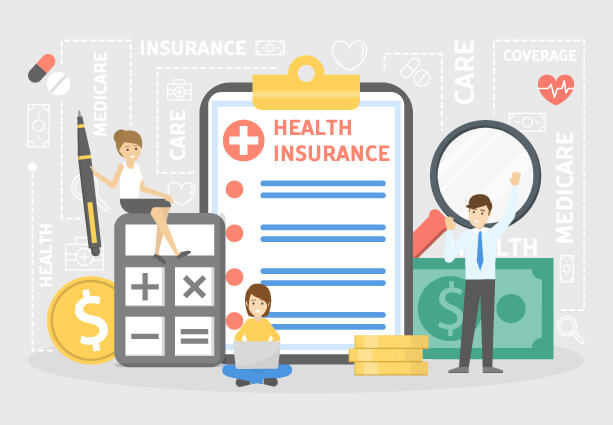
We can’t stress this enough. Billing automation lies at the crux of the health of medical billing systems. During the present times, caregivers need to carefully evaluate the need to automate medical billing for overall productivity and efficiency. Process automation, along with centralized billing practices, should be incorporated within the hospital management system. Medical billing management solutions need to be deployed to enhance revenue cycle automation and reduce the administrative burden on medical billers.
Telemedicine is now the center point of healthcare practices, and medical billing systems must fall in line. More than a stop-gap arrangement that addresses health care needs during the pandemic, telehealth is now envisioned as the future of healthcare. Medical billing processing, medical invoicing, and billing software need to be consistently aligned to offer medical billing from home options. As caregivers focus on innovative ways to offer care to patients, medical billing software needs to fall in line to offer automated and hassle-free billing solutions. As healthcare billing and coding are frequently updated, medical bill processing must work in an automated fashion to adapt. Medical billing from home is the need of the hour.
Billing software, such as medical claims management solutions and remittance software solutions, can be incorporated into the medical billing systems for all-rounded workflow efficiency.
How To Boost Billing Profits?
“The American Medical Association estimates that some payers suffer rework on over 20% of claims due to human data entry errors.” These errors result in denied claims and revenue loss. Reimbursement in healthcare is adversely impacted through this, and reprocessing claims is a complex and time-consuming task. Medical billers have a tedious task at hand due to the complexity of medical billing processing. The human error component is another factor that contributes to this number. Incorporating quality medical billing software programs can mitigate human error challenges to a large extent.
Medical billing management solutions address the root cause of this problem by automating the claims processing procedure and ensuring the accuracy of patient information and demographics. Furthermore, process automation targets a higher point of success through its wholesome approach across caregiving’s entire life cycle. Healthcare billing and coding are only one dimension of the medical billing software programs. Medical billers are put at ease through comprehensive process automation. Independent medical billing processing is achievable and desirable.
Steps Involved in the Implementation of Automated Medical Billing Solutions
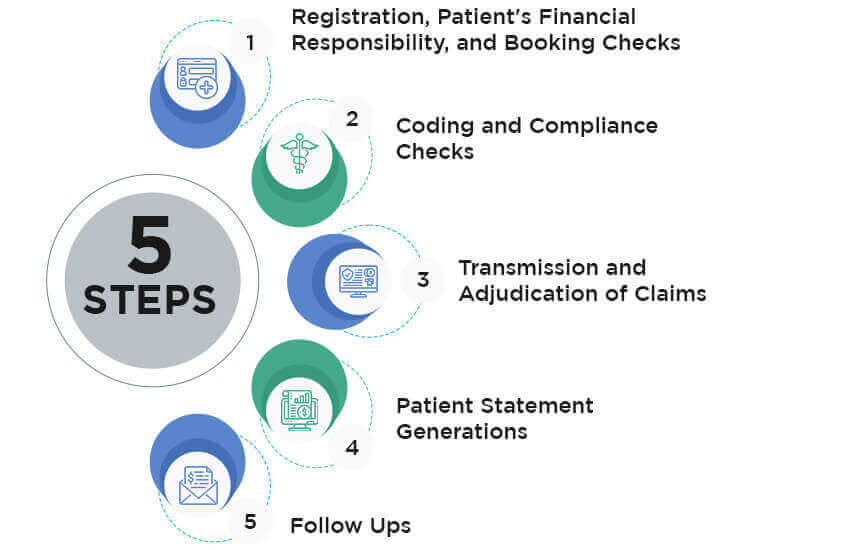
The medical billing cycle seems quite complicated, but automation can make it smooth and streamlined. Here are some steps to make implementing automated billing systems smoother and faster.
1. Registration, Patient’s Financial Responsibility, and Booking Checks
The patient’s care journey at a doctor’s clinic begins with registration. Ensuring this step through automation can make the process a lot more simplified and errorless. As the registration process enables billers to verify the details provided before they submit the claims, automation can save patients’ and clinicians’ time too.
After the registration verification, providers need to check patients’ coverage details to ensure bills are assigned properly and prescriptions are covered for the entirety of the bill. This check can also turn quicker and simpler by leveraging RPA technology or integrating it into the healthcare billing process. Another crucial step in the medical billing process is at the time of bookings. When new patients book appointments, they are given out forms to fill in, which provide clinicians with information about copayments. This copayment information gets verified, and a report is sent to the medical coder. The medical coder then analyses and translates, and generates a superbill. This superbill containing all information about the patient is transferred to the medical biller. And with automation in medical billing solutions, the superbill is transferred automatically.
2. Coding and Compliance Checks
Although the billability of a procedure mostly depends on the rules established by the payer and the patient’s insurance plan, the medical biller guarantees that the procedures coded are chargeable after obtaining the superbill and transferring it into the healthcare medical billing software.
Billers are also responsible for ensuring that compliance requirements are met. Normally, the code must adhere to requirements outlined by the Health Insurance Portability and Accountability Act (HIPAA) and the Office of Inspector General (OIG) compliance standards.
3. Transmission and Adjudication of Claims
Leveraging EDI technology, providers can automatically carry out the transmission of claims. Even HIPAA has mandated that all covered entities will submit the claims electronically. Successful claims transmission is only possible through EDI if they are errorless. To ensure claims are error-free, automated billing systems can be used.
Apart from the transmission of claims, the adjudication process is the next step. At this step, a claim is either accepted, rejected or denied. Payers assess the claim to determine whether it is authentic or compliant and the amount paid to the provider. The biller or provider is sent the details of the claims during the adjudication process so they can determine how much payers are willing to pay and why.
4. Patient Statement Generations
The care that the patient has received from their healthcare practitioner is described in detail in patient statements. Once the payer has paid the agreed-upon sum, the patient is responsible for the remaining balance. Some payers also include an Explanation of Benefits (EOB) to clarify why some procedures are reimbursed while others are not.
5. Follow Ups
Paying bills on time is necessary to keep a system running smoothly. To ensure that medical bills are paid on time, billers are responsible for mailing out precise bills promptly. Regarding bill payments, notifications, and collections, each provider has their own set of policies and deadlines. If the patient does not pay the full amount or is past due, the biller must ensure the provider is fairly compensated for their services.
Key Benefits of Automated Medical Billing
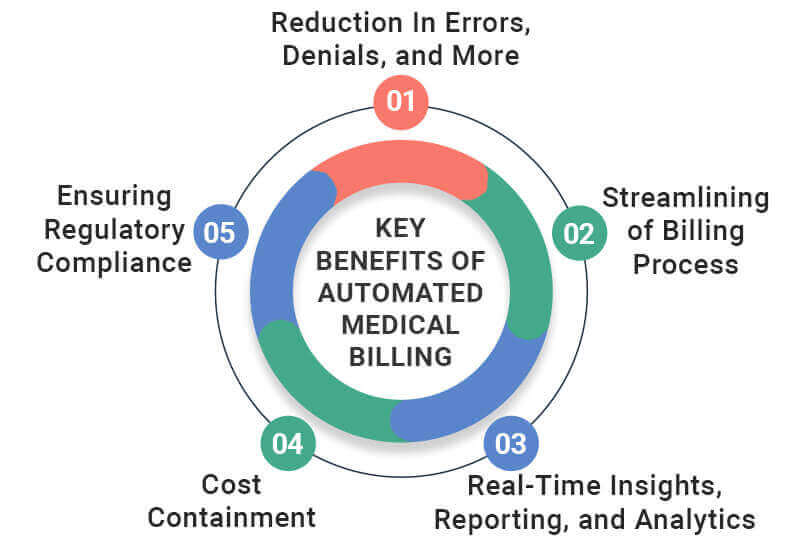
1. Reduction In Errors, Denials, and More
Automated medical billing is one practical approach a clinic might use to relieve overburdened personnel of additional duties. Practices enable clinicians to focus their time and efforts on giving patients appropriate care by using automation technology.
Automated medical billing also lessens the possibility of human error throughout the procedure. Automating processes can significantly enhance administrative operations within a medical practice by lowering the possibility of human mistakes. And reduced errors in the healthcare billing process mean minimum denials and delays in claims submissions and reimbursements. By utilizing automation technologies for the medical billing process, practices can profit from improved operations and reduced human error. Besides, leveraging automation in billing systems is also great for value-based reimbursement models in healthcare.
2. Streamlining of Billing Process
Another benefit is the streamlined billing process. The bill-paying process is accelerated by automated medical billing, making it more accessible and simpler for payers to complete. According to some reports, nearly 85% of patients prefer electronic payments, while 82% want to make payments in one centralized place.
Automated medical billing allows patients to get electronic payment through a centralized place facility and numerous other benefits. Patients can also access their bills more quickly and easily, and they can pay them on time. By doing this, paying bills becomes as easy and stress-free as possible. Such is a simple method to improve a practice’s patient experience. Automation facilitates this payment simplicity, which benefits providers and patients.
3. Real-Time Insights, Reporting, and Analytics
Automated medical billing’s capability to offer real-time data is one of its key benefits. With the help of these insights, practices can better understand financial performance and make decisions based on accurate and current information.
Moreover, automated medical billing can regularly produce automated reports that may be distributed among practitioners. The visibility, distribution, and analysis of financial results are made simple by the convenience of preparing and sharing these reports.
4. Cost Containment
Automation in the medical billing process results in cost savings. Implementing RPA technology decreases overhead expenses related to human medical billing processes. Healthcare practitioners can concentrate more on responsibilities relevant to patient care with the help of automation as opposed to the minute details of billing.
5. Ensuring Regulatory Compliance
A good automated medical billing company will make sure their clients adhere to laws that are now in effect as well as those that are frequently changing. Automation in billing software gives a setup that already conforms with the different pertinent standards to protect patients and practices.
Automated healthcare payment systems that are correctly built give protection, privacy, and compliance right out of the box to comply with HIPAA laws and to ensure that personally identifiable information (PII) is kept secure.
How To Choose The Right Medical Billing Software?
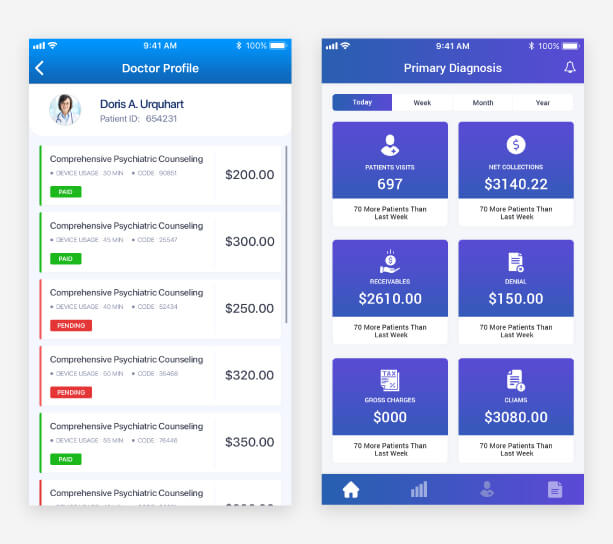
The right medical billing processing software is not a one size fits all solution. Every healthcare organization will have its own specific needs of medical invoicing and other requirements that will need to be assessed and identified. However, there are a couple of indicators that can assist in the selection process. It would be prudent to opt for an all-rounded solution that uses data for the healthcare organization’s multiple purposes. From appointment scheduling, eligibility verification, clinical record documentation, clinical procedures, prescription requirements to medical billing and coding, medical credentialing, and claims management – a wholesome solution is usually the more productive and accurate one.
Another important aspect is the capacity of the software to identify and resolve the areas that require attention and improvement. Therefore, billing automation is a comprehensive merging of all other caregiving activities, which will ultimately ensure higher reimbursements and a greater patient experience.
Conclusion:
The right medical billing processing software is not a one size fits all solution. Every healthcare organization will have its own specific needs of medical invoicing and other requirements that will need to be assessed and identified. However, there are a couple of indicators that can assist in the selection process. It would be prudent to opt for an all-rounded solution that uses data for the healthcare organization’s multiple purposes. From appointment scheduling, eligibility verification, clinical record documentation, clinical procedures, prescription requirements to medical billing and coding, medical credentialing, and claims management – a wholesome solution is usually the more productive and accurate one. Another important aspect is the capacity of the software to identify and resolve the areas that require attention and improvement. Therefore, billing automation is a comprehensive merging of all other caregiving activities, which will ultimately ensure higher reimbursements and a greater patient experience.
References:
https://1stproviderschoice.com/significant-impact-of-the-covid-19-pandemic-on-medical-billing/
OSP is a trusted software development company that delivers bespoke solutions as per your business needs. Connect with us to hire the best talents in the industry to build enterprise-grade software.

How can we help?
Fill out the short form below or call us at (888) 846-5382
Looking for software solutions to build your product?
Let's discuss your software solutions for your product in our free development acceleration call!
Get In Touch arrow_forwardDiscuss Your Project Handover with a team of expert Book a free consultation arrow_forward
About Author

Written by Riken Shah linkedin
Riken's work motto is to help healthcare providers use technological advancements to make healthcare easily accessible to all stakeholders, from providers to patients. Under his leadership and guidance, OSP Labs has successfully developed over 600 customized software solutions for 200+ healthcare clients across continents.

















